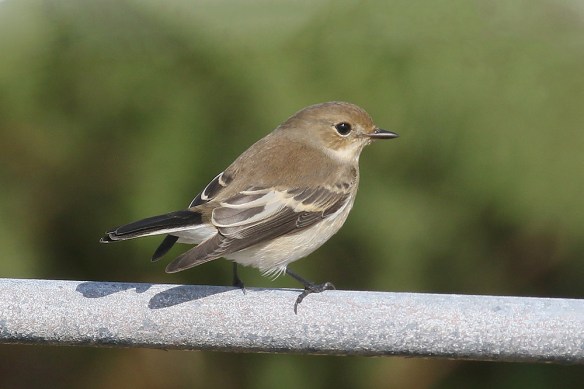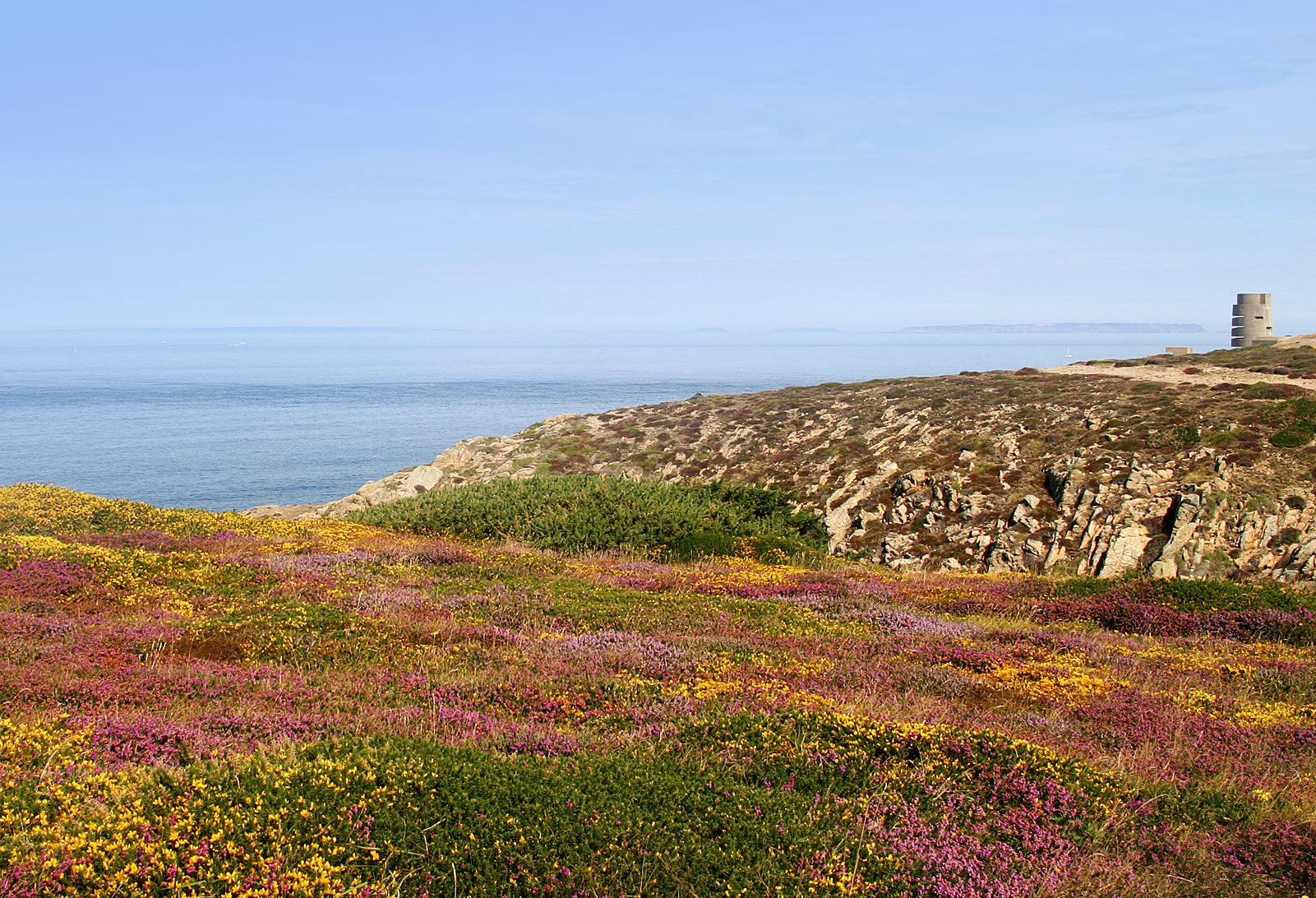 Insects in trouble
Insects in trouble
 From The Wildlife Trusts
From The Wildlife Trusts
We’re facing a global biodiversity crisis, with many species declining at an alarming rate. Animals and plants that were once common are now scarce, and insects are no exception. Recent evidence suggests that insect abundance may have declined by 50% or more since 1970, but insect declines are not as well studied as those in larger animals, like birds and mammals. The best data we have in the UK and Channel Islands is for butterflies and moths (see Jersey here and report 2004-2013), which show a broad decline. You can read more in The Wildlife Trusts’ new report about our disappearing insects Insect declines and why they matter.
 The bulk of all animal life, whether measured by biomass, numerical abundance or numbers of species, is comprised of invertebrates such as insects, spiders, worms and so on. These innumerable little creatures are far more important for the functioning of ecosystems than the large animals that tend to attract most of our attention. Insects are food for numerous larger animals including birds, bats, reptiles, amphibians and fish, and they perform vital roles such as pollination of crops and wildflowers, pest control and nutrient recycling.
The bulk of all animal life, whether measured by biomass, numerical abundance or numbers of species, is comprised of invertebrates such as insects, spiders, worms and so on. These innumerable little creatures are far more important for the functioning of ecosystems than the large animals that tend to attract most of our attention. Insects are food for numerous larger animals including birds, bats, reptiles, amphibians and fish, and they perform vital roles such as pollination of crops and wildflowers, pest control and nutrient recycling.
There have been several recent scientific reports describing the rapid decline of insects at a global scale, and these should be a cause of the gravest concern (summarised here). These studies suggest that, in some places, insects may be in a state of catastrophic population collapse. We do not know for sure whether similar reductions in overall insect abundance have happened in the UK. The best UK data are for butterflies and moths which are broadly in decline, particularly in farmland and in the south. UK bees and hoverflies have also shown marked range contractions. The causes of insect declines are much debated, but almost certainly include habitat loss, chronic exposure to mixtures of pesticides, and climate change. The consequences are clear; if insect declines are not halted, terrestrial and freshwater ecosystems will collapse, with profound consequences for human wellbeing.
The good news is that it is not too late; few insects have gone extinct so far, and populations can rapidly recover.
We urgently need to stop all routine and unnecessary use of pesticides and start to build a nature recovery network by creating more and better connected, insect friendly habitat in our gardens, towns, cities and countryside.
Only by working together can we address the causes of insect decline, halt and reverse them, and secure a sustainable future for insect life and for ourselves.
This report summarises some of the best available evidence of insect declines and proposes a comprehensive series of actions that can be taken at all levels of society to recover their diversity and abundance.
But it’s not too late. Insect populations can recover rapidly if given the chance. To bring about this recovery, we have to make more space for insects. Gardens can be a haven for wildlife, helping connect up wild places in our wider landscape, creating a Nature Recovery Network that enables nature to live alongside us. Examples of how you can help can be found here and Jersey and Guernsey’s Pollinator Project.
The full Wildlife Trusts report Insect declines and why they matter can be downloaded here




























 H Glyn Young and Andrew Koester
H Glyn Young and Andrew Koester No one can have failed to pick up this week that our environment and the biodiversity that we are a part of is under severe threat. Our very future is being debated. The Great Garden Bird Watch in Jersey may seem trivial by comparison but, like its counterparts in the UK (this year’s
No one can have failed to pick up this week that our environment and the biodiversity that we are a part of is under severe threat. Our very future is being debated. The Great Garden Bird Watch in Jersey may seem trivial by comparison but, like its counterparts in the UK (this year’s 

 The relative fortunes of the Big 16 over the 18 years of the count can all be seen in our report (
The relative fortunes of the Big 16 over the 18 years of the count can all be seen in our report ( recovery of the house sparrow, a species inextricably connected with people that had been disappearing from large parts of the British Isles. It’s doing ok in parts of Jersey!
recovery of the house sparrow, a species inextricably connected with people that had been disappearing from large parts of the British Isles. It’s doing ok in parts of Jersey! From
From 


 As another year rolls around its time for this year’s annual Jersey Great Garden Bird Watch with
As another year rolls around its time for this year’s annual Jersey Great Garden Bird Watch with  The Great Garden Bird Watch is in its 18th year so we have plenty of counts to use in assessing the recent trends in Jersey’s garden birds. And things aren’t so good really. If we just look at the most recorded species (house sparrow, greenfinch and chaffinch, blue tit and great tit, blackcap, blackbird, song thrush and robin, starling, wood
The Great Garden Bird Watch is in its 18th year so we have plenty of counts to use in assessing the recent trends in Jersey’s garden birds. And things aren’t so good really. If we just look at the most recorded species (house sparrow, greenfinch and chaffinch, blue tit and great tit, blackcap, blackbird, song thrush and robin, starling, wood  pigeon and collared dove and a few others like pheasant, magpie, jay and great spotted woodpeckers) we see a slow decline throughout the period since 2002. However, if we take out that great garden success story, the wood pigeon, we see a much more dramatic picture. Most people know about the changes in starling numbers, and the
pigeon and collared dove and a few others like pheasant, magpie, jay and great spotted woodpeckers) we see a slow decline throughout the period since 2002. However, if we take out that great garden success story, the wood pigeon, we see a much more dramatic picture. Most people know about the changes in starling numbers, and the  disappearance of sparrows from many gardens (strangely, if you’ve got sparrows you probably have lots of them and they have staged a recovery) but blue and great tits aren’t doing so well either. It’s not all bad news though, blackbirds and robins are holding their own. The picture in the UK is much the same
disappearance of sparrows from many gardens (strangely, if you’ve got sparrows you probably have lots of them and they have staged a recovery) but blue and great tits aren’t doing so well either. It’s not all bad news though, blackbirds and robins are holding their own. The picture in the UK is much the same  where 40 years of the RSPB’s Big Garden Birdwatch shows the
where 40 years of the RSPB’s Big Garden Birdwatch shows the  one weekend a year, red squirrels are birds. I’m not sure what they think about that, maybe they accept that it’s an honour!
one weekend a year, red squirrels are birds. I’m not sure what they think about that, maybe they accept that it’s an honour!

 From
From  The Natural Environment, Growth, Housing and Environment, States of Jersey (formerly Department of the Environment) commissioned the
The Natural Environment, Growth, Housing and Environment, States of Jersey (formerly Department of the Environment) commissioned the 








